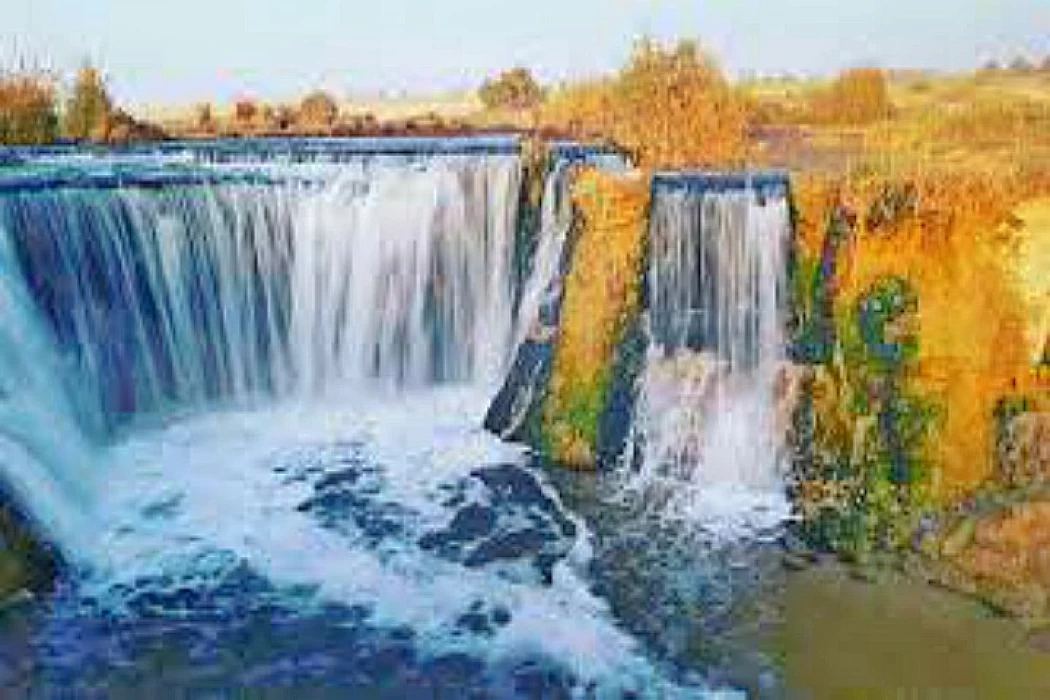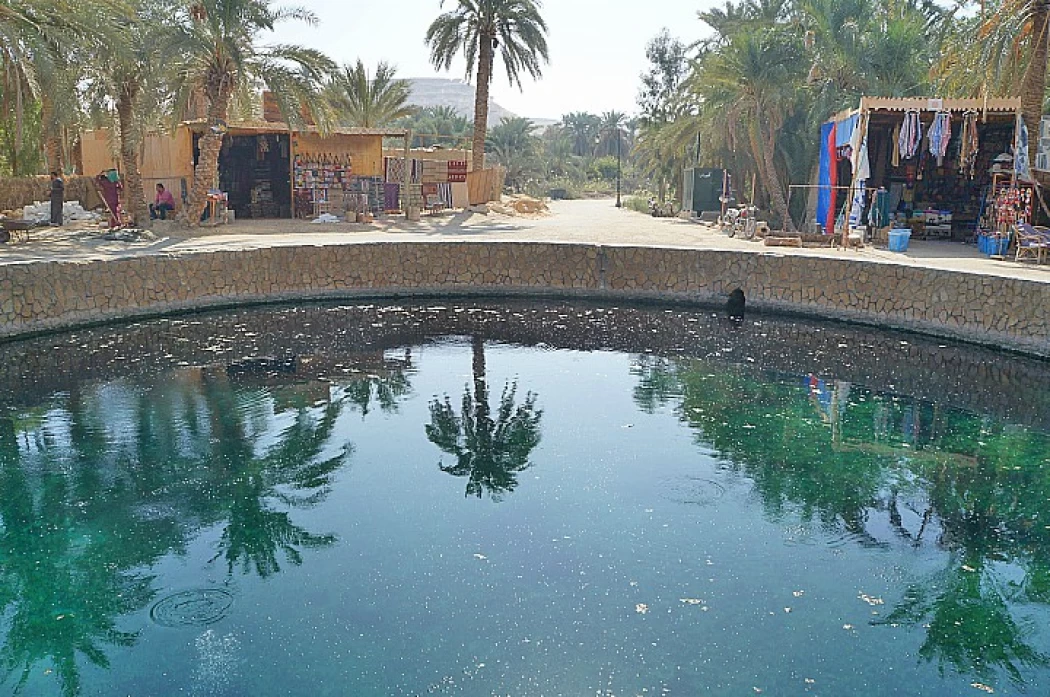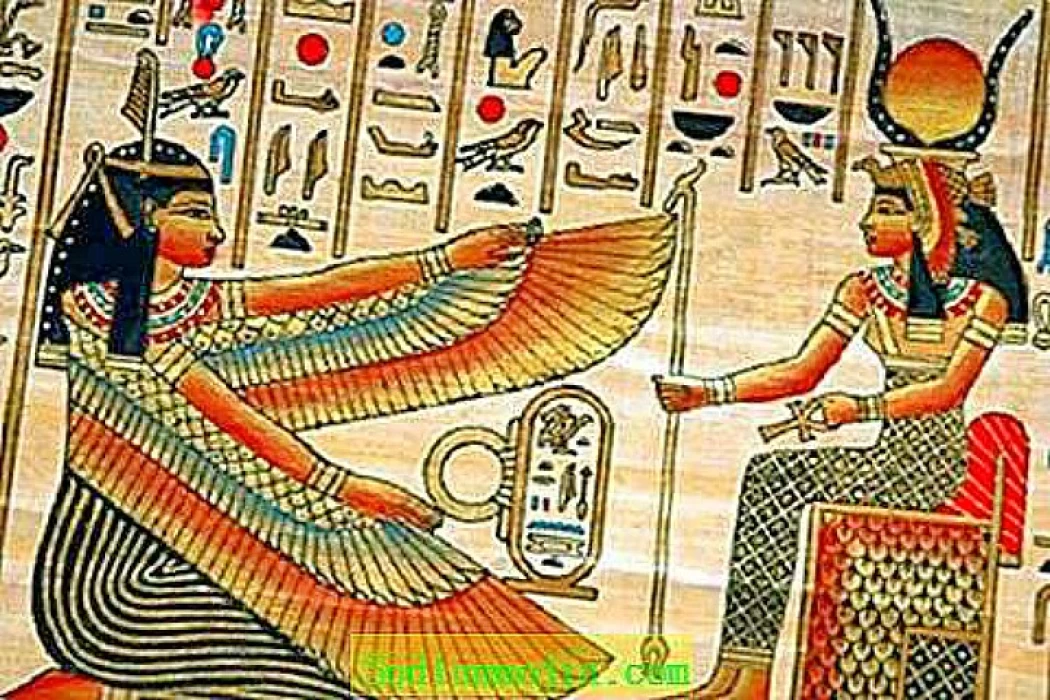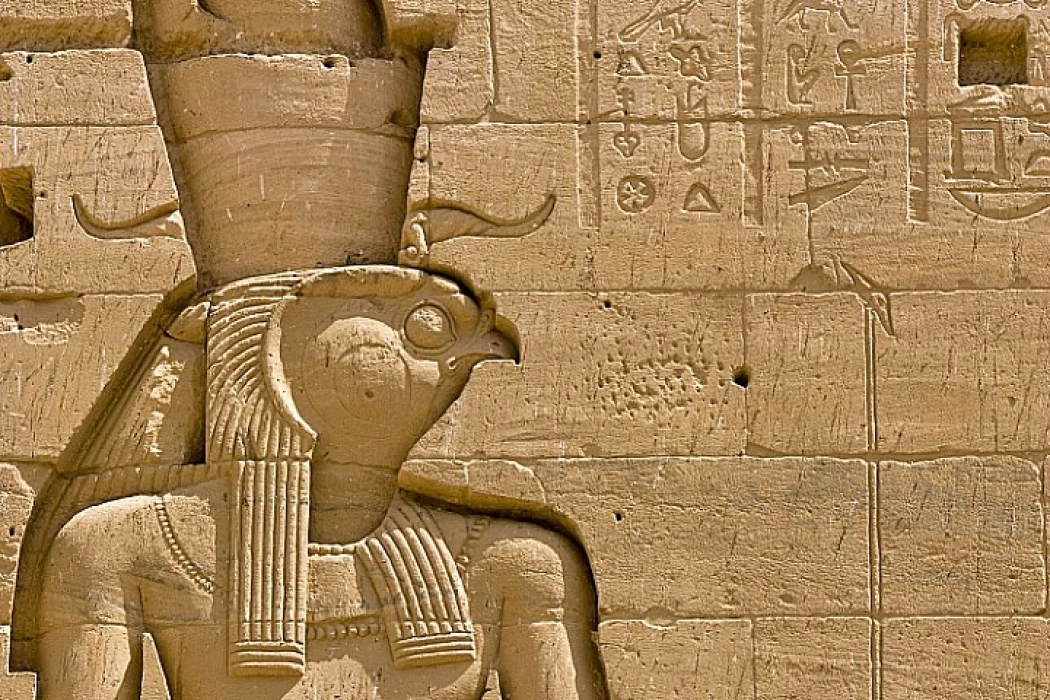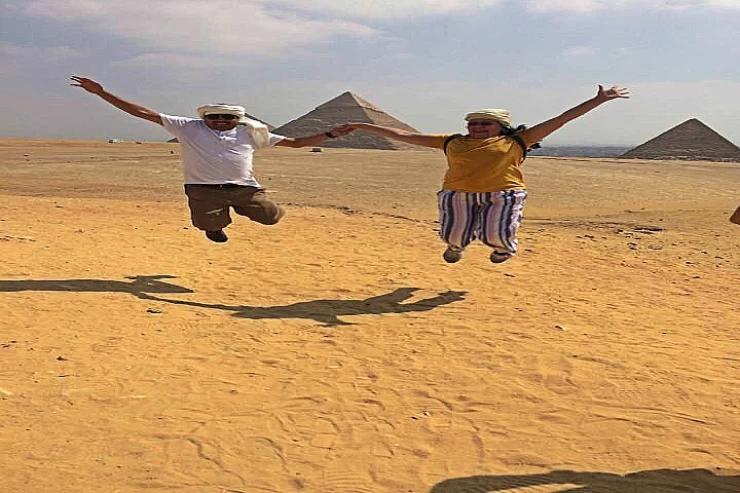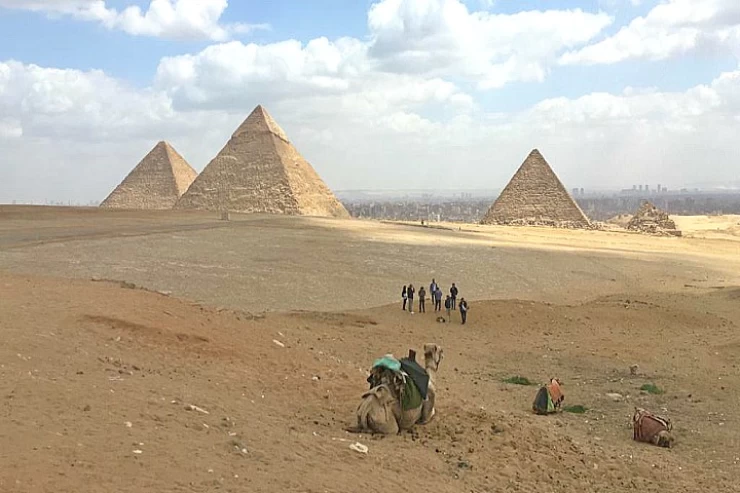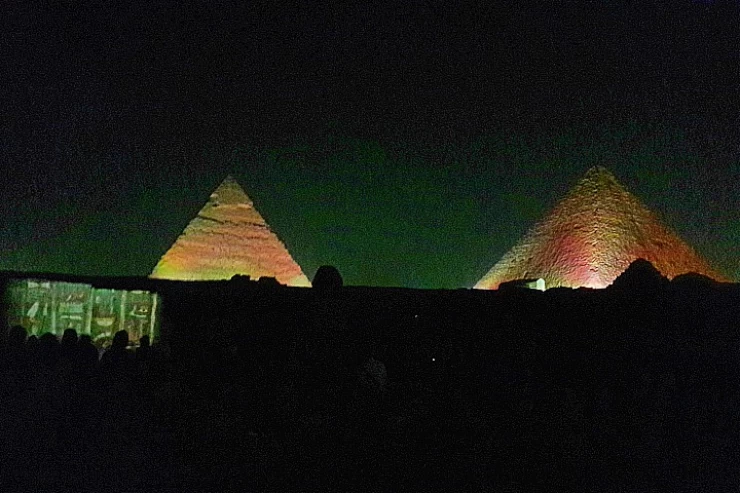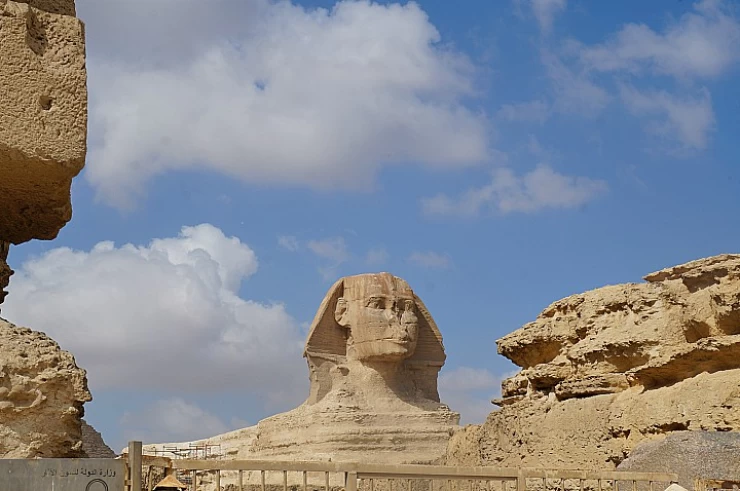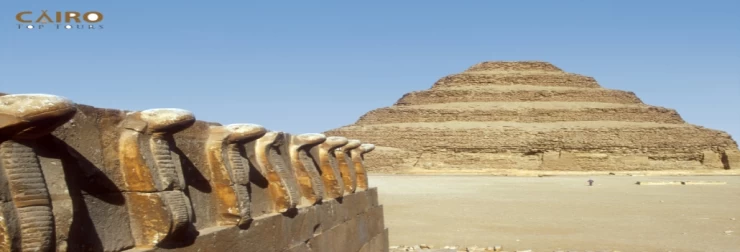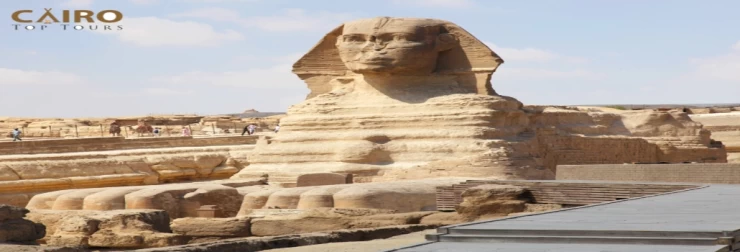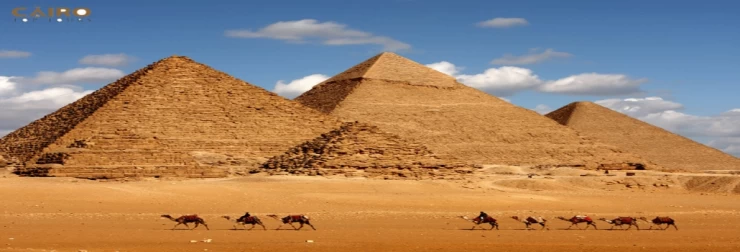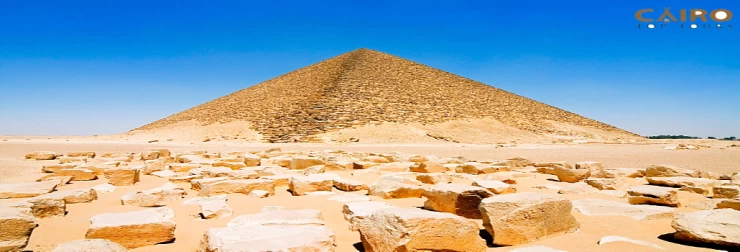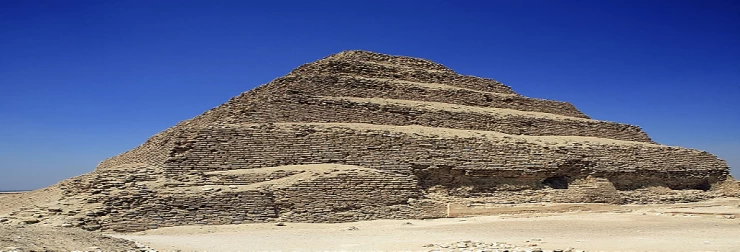
Pyramids of Egypt | Egyptian Pyramids
Djoser's Step Pyramid
It is also the oldest pyramid in Egypt: the age of the construction of the Step Pyramid dates back just to the beginning of the Third Dynasty, during the reign of King Nettrecht (about 2667-2648 BC), under the name already known as Djoser. Later on, this name became commonly used and might be treated nowadays as one of the most known archaeological monuments of Egypt. Therefore, it constitutes an important point in ancient Egyptian history in turning the funerary monuments; for this reason, it represents a revolution in stone architecture, which also brought changes to the field of royal burials. Besides its gigantic size, it is the very first pyramid ever built by ancient Egyptians and the oldest known stone building in the world.
The Leaning Pyramid of Sneferu
It has been enlisted in the UNESCO World Heritage List as part of the Ancient Necropolis of Menf. The original height of the Leaning Pyramid is about 121 meters, with the length of each side at its base about 188.1 meters. It was an angularly inclined pyramid; its first inclination occurs at 55 degrees and 49 meters high, followed by another one after 52 meters at a 43-degree inclination. It includes two entrances: the first one is at the northern side at an altitude of 12 meters, introducing a 79.5-meter-long descending corridor that further leads to a cross hall having a gabled roof and afterward to the irregular corridor from where the right-hand side goes upward towards the west entrance of the pyramid. The left-hand one leads to an unfinished burial chamber; its unfinished roof was made of cedar wood trusses brought from Lebanon. There have been several excavations in the pyramid: the first one was in 1839 A.D. by the British Brange and Fitz when they cleaned the interior of the pyramid, then between 1894 and 1895 A.D. when the De Morgan expedition came. The first scientific expedition has dug up this place.
Red Pyramid
The red pyramid is one of three pyramids built by King Sneferu after the Curved Pyramid, one kilometer south, and the third pyramid called the Pyramid of Meidum. The red pyramid is the tallest of Dahshur pyramids; it is called "Red" due to the tendency of its stones to turn red. It was faced with a layer of white limestone from the quarries of Tura, south of modern Cairo, which was later stripped in the Middle Ages for reuse in building. The Red Pyramid is the third largest Egyptian pyramid after the Khufu and Khafre pyramids in Giza.
Pyramid of Khufu
The Pyramid of Khufu has long been thought of as part of the Seven Wonders of the Ancient World and Great Pyramid constructed from local limestone but when its outer layer has wholly made out of highly valued fine quality of white limestone cladding, that brought Tura quarries by barges. This is a pyramid containing three chambers, one cut in the lower rock, two at a height inside the building itself, as is unique in the pyramid of Cheops and in no other pyramid. This again it is because the visitor can see the sarcophagus in which lay King Khufu since this chamber known as the King's Chamber in the upper chamber is accessible via a corridor with a grand tiered ceiling which is considered to be one of the masterpieces of ancient architecture.
Pyramid of Khafra
The Pyramid of Khafre at Giza is one of the most impressive surviving edifices from ancient times. This pyramid was built in the time of Pharaoh Khafre, about 2520 BC. It is the second largest pyramid inside the Giza complex, though a little short in height compared to the Great Pyramid of Giza, standing to a height of about 136 meters (446 feet) to the top.
Pyramid of Menkaure
The third pyramid in the Giza plateau was constructed by King Menkaure, son of Khafre and grandson of Khufu, who ruled from circa 2532 to 2503 BC. Because it was on a small base area, the original pyramid had attained a height of 65 meters, making Menkaure's pyramid the smallest of the three pyramids of Giza. This small size was due to several factors, including the small area remaining on the Giza Plateau and the materials used for the outer shell of Menkaure's pyramid, as his predecessors used limestone to clad their pyramids, while Menkaure used granite brought from Aswan, more than 800 kilometers away from Giza.
Pyramid of Djedef Ra
The pyramid was not finished. Completed, it would have been the size of the Pyramid of Menkaure-the third largest of the Giza pyramids. This was considered the most beautiful of the pyramids, having an outer surface made of imported polished granite and limestone crowned with a big miniature pyramid. It is also believed that due to its unfinished state, it was largely dismantled during the time of the Roman Empire's rule after conquering Egypt in favor of their buildings.
Information about the Pyramids of Egypt
Egyptian pyramids represent royal tombs developed from the old kingdom to late Ptolemaic, a period amounting to approximately 2700 years. In addition, it neared its construction in the Third Dynasty, up to the Sixth Dynasty-2686 to 2325 BC. Moreover, they are not isolated, but an architectural complex that is composed of the structure.
The ancient Egyptians chose the western side of the Nile to erect pyramids based on their belief that the western side symbolized the world of the dead—the sun sets over there—so they built their graves in the west, while the eastern side represents the world of the living where the sun rises, so they founded their cities there. It was not the sole factor in deciding on the location, but land height was a prerequisite.
Latest Articles
Admin
Wadi El Rayan in Faiyum | Waterfalls in Wadi El Rayan
Wadi Al-Rayan Nature Reserve is one of the distinguished tourist areas in Fayoum Governorate, and one of the most important areas is the picturesque Wadi Al-Rayan Falls with its charming nature, which made it a destination for hundreds of thousands of tourists from different countries of the world who visit it during the year and enjoy practicing various tourist activities around the waterfalls, such as sand skiing, bird watching, and others.
Admin
Tourism in Aswan | Aswan Tourism in Egypt
Aswan Governorate has a huge wealth of diverse natural attractions, including the great Nile River, a large number of nature reserves, vast areas of deserts and mountains, and other areas of attractive nature. It is also characterized by an ancient, unique, rich and diverse civilization, as it possesses a civilizational and cultural heritage that bears witness to all the periods of history that have succeeded in it during thousands of years.
Admin
The Medical Tourism in Egypt | Therapeutic Tourism Egypt
If you are planning medical tourism in Egypt and you don't know what medical tourism places you can visit, let me tell you, dear reader, about places rich in natural resources that provide effective treatments to get rid of diseases and get the most energy and vitality.
Admin
The Nile River information
The Nile River is the longest river in the world and is located in the continent of Africa, and it divides the land of Egypt from south to north to branch into two branches that flow into the Mediterranean Sea, namely the Rosetta Branch and the Damietta Branch, its length is from its headwaters in Lake Tanganyika to its mouth in the Mediterranean Sea
Admin
Goddess Isis | The Egyptian Goddess Isis
In the first millennium BCE, Isis and Osiris became the most worshipped Egyptian deities, and Isis took on many of the traits of the other gods. The rulers of Egypt and its neighbors to the south in Nubia began building temples specifically dedicated to Isis, and her temple at Philae was one of the most important religious centres for Egyptians and Nubians alike.
Admin
God Amun Ra | Amon Ra The Master of the Ancient Egyptian gods
By merging with Ra, Amun manifested himself in creation, thereby combining in himself the two divine opposites: as Amun, he was invisible, mysterious, and detached from the world, and as Ra, he was visible and the giver of everyday life. Similarly, he was associated with Maat, the Egyptian concept of justice and balance in the universe.
